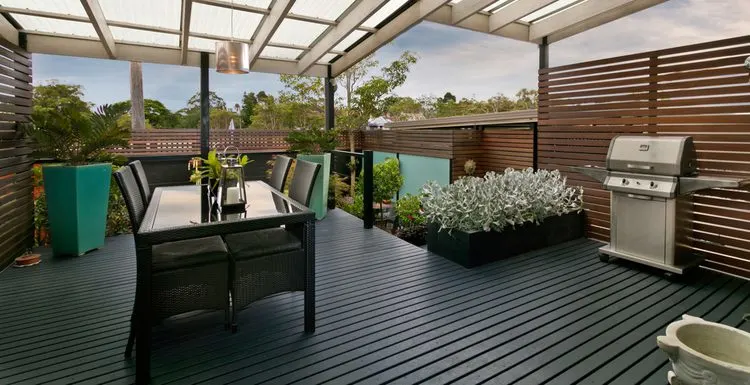Looking for deck lattice alternatives?
You’re in the right place. When I was covering my deck, I didn’t like the cheap lattice I found at the hardware store, so I went looking for alternatives. Here’s what I found.
Looking for Deck Lattice Alternatives?
If you hate the look of an open lattice around a deck, then you’ll love these deck lattice alternatives. Say goodbye to the standard crossed wood planks and hello to these fabulous alternatives.
The nice thing about home design is that almost any piece of decorative finish can have alternative options.
Just because latticework is the most common option for deck skirts, that doesn’t mean it’s the only one. Some creative options include:
- Redesigning the Lattice
- Doing it Like the Victorians
- Using Straight Planks With Gaps
- Using Solid Skirting to Seal the Space
- Use the Gap as Storage
- Seal It in With Brick and Stone
6 Deck Skirt Lattice Alternatives We Love
1. Make the Lattice Work
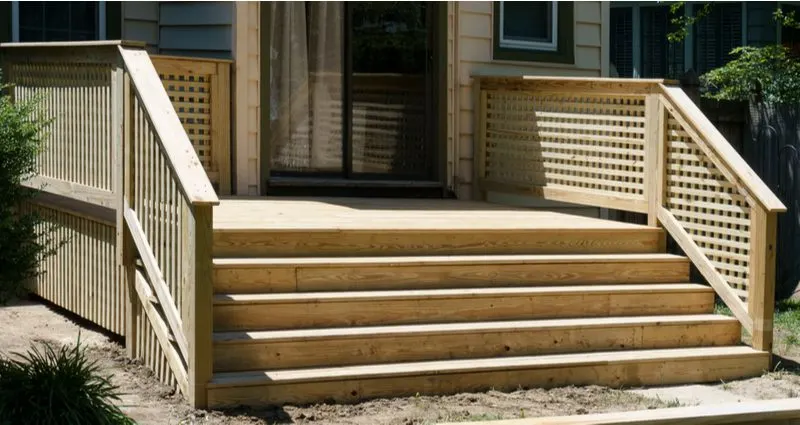
Noel V. Baebler/Shutterstock
The chances are, if you’ve ever seen a lattice deck skirt, that it was a solid strip of plastic lattice around a mediocre deck.
Even wood lattices are often left to stand alone, looking to all the world like cheap, poorly made fencing, but it doesn’t have to be that way.
The issue that most people have with lattice is not the latticework itself, but the way it was installed.
By framing the lattice, incorporating brick pillars, or even just using wood over the plastic lattice, you’ll find that it transforms into a whole different style.
Alternatively, try using a lattice that has horizontal and vertical planks rather than diagonal ones. You’ll be surprised at how much difference simply rotating the design can make. Another often forgotten way to improve any deck skirt is to paint it.
Try using your house’s accent color for the frame and painting the lattice to match the railings or trim.
Just because there is a standard way to put lattice trim around a deck doesn’t mean that is the only way. If you still aren’t impressed by the lattice look, try some of these other alternative deck skirts.
2. Go Victorian With a Deck Skirt
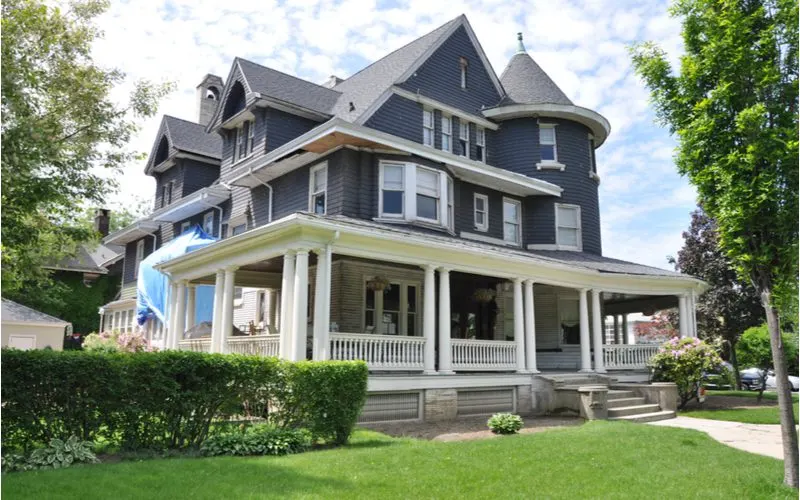
rSnapshotPhotos/Shutterstock
The Victorians are well remembered for being a bit eccentric in all aspects of life. It should come as no surprise that even their deck skirts were no exception. Victorian deck skirts are a beautiful exercise in excess.
Each one is unique and custom-made to match the house. The designs of Victorian deck skirts vary, but they share similar features.
Fancy old houses require fancy old deck skirts, and that’s exactly what you’ll find if you look at them.
The deck skirts have intricate designs cut out of them, some relatively simple and others detailed beyond reason. The motifs that you’ll see in the 1890s look very similar to extravagant railing balusters.
If you are a skilled carpenter or know of one, this can be a beautiful way to add character to your house.
And, of course, don’t forget to paint it. Many Victorian deck skirts feature several colors. For example, the flat wood design may match the color of the door and shutters, while the frame is the same as the accent color on the trim.
If you do not have a way to custom-cut designs into wood, you can always use solid wood panels as the deck skirt and then paint the design on them.
Try looking into historic references for more ideas and designs for fancy, beautiful deck skirts.
3. Use Vertical or Horizontal Slats
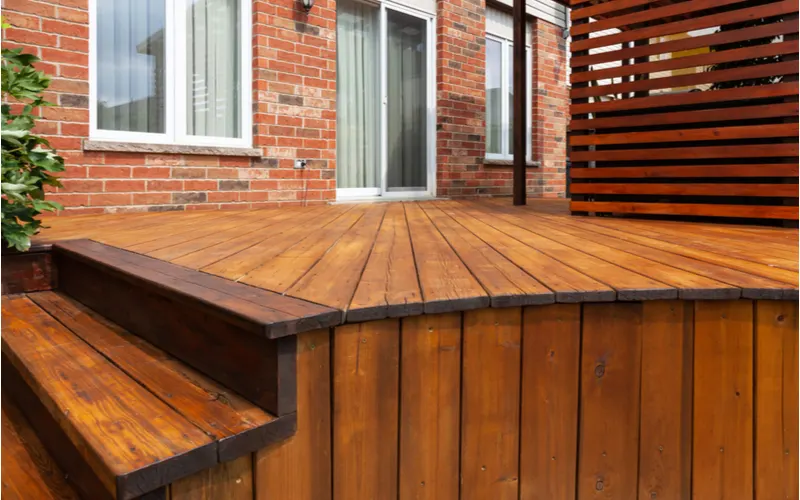
Viktorus/Shutterstock
If you’re a fan of the open look of lattice but can’t stand the design, why not try slats instead? Vertical, horizontal, and even diagonal slats look wonderful as a deck skirt.
The spacing between them is entirely up to you and doesn’t even need to be consistent.
By changing the spacing between planks, you can create waveforms and repeating patterns that interest the eye. Changing the side of the planks or the type of wood is also a lovely way to add character to your house.
If your deck is also done with planks and gaps, why not try matching the deck to the deck skirt? The wrap-around look is stunning and can help smooth out transitions between levels or stairs.
A particularly nice slat design is to alternate between medium-sized and ultra-thin planks in a horizontal arrangement.
This adds variety without looking too overwhelming. Any layout you can think of works when you are using slatted deck skirting.
4. Make It Solid
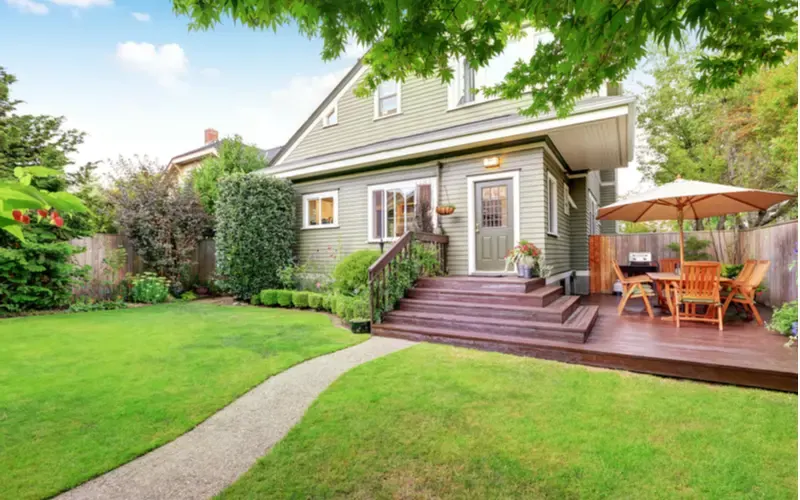
Artazum/Shutterstock
If the gaps in lattice deck skirts are the part that bothers you, then the solution is simple: eliminate the gaps.
Solid deck skirts are popular as they create a uniform finish around the deck and prevent animals from getting in as easily.
They also prevent weirdos from peeking under your front porch. Similar to the slat design, solid deck skirts can be arranged in almost any fashion. Vertical, horizontal, diagonal, and mixed designs all look good if done right.
While many people choose to match their deck skirts to the deck, it is entirely up to you. If you want your porch to have the wrap-around look, then go for it.
A particularly striking layout is matching the framing to the deck and then using an alternate wood or color for the solid skirting. An opportunity that most people ignore when they build a solid deck skirt is painting.
By making a solid deck skirt, you’ve just given yourself a canvas to paint anything on. Solid colors are a nice way to match the accents on the house, but you can also add designs and murals to show some character.
5. Use the Space
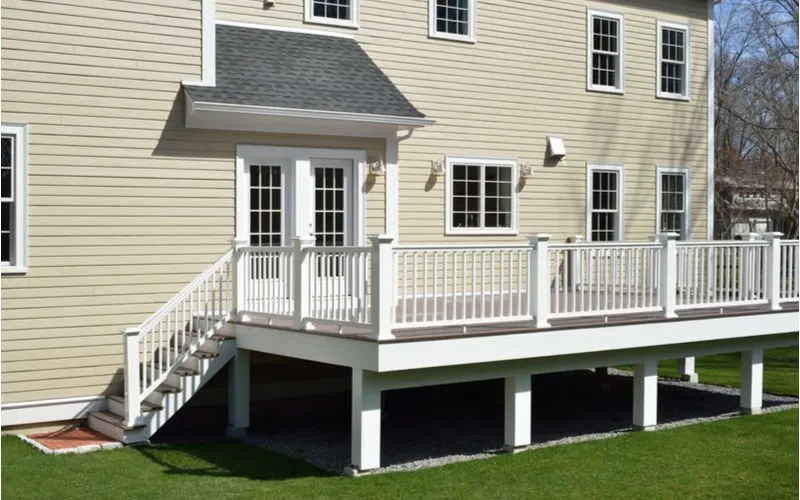
Jorge Salcedo/Shutterstock
If you have a high deck, especially in the backyard, then you have the perfect opportunity to expand your storage. Why install an unsightly shed that takes up yard space when you already have space under your deck?
By building a door into a solid deck skirt, you can easily access tons of unused space under your deck. It’s the perfect size for storing lawnmowers, sports equipment, gardening tools, and tires.
If you have enough room, you could even keep a kayak or snowmobile under there.
Additionally, when creating under-deck storage, you can leave it as is, or build a separate, walled space within the under-deck space to keep items clean and animal-free.
The other upside to building storage under your deck is that you can make it as visible or inconspicuous as you like. Some people opt for miniature barn door-style storage doors, while others make the doors look like hidden panels.
As well, storage doors can be built, or even retrofitted, to almost any type of deck skirt.
Many people prefer to use them alongside solid wood deck skirts, but there is no reason you can’t have a slatted deck skirt and under-deck storage.
6. Brick It Up
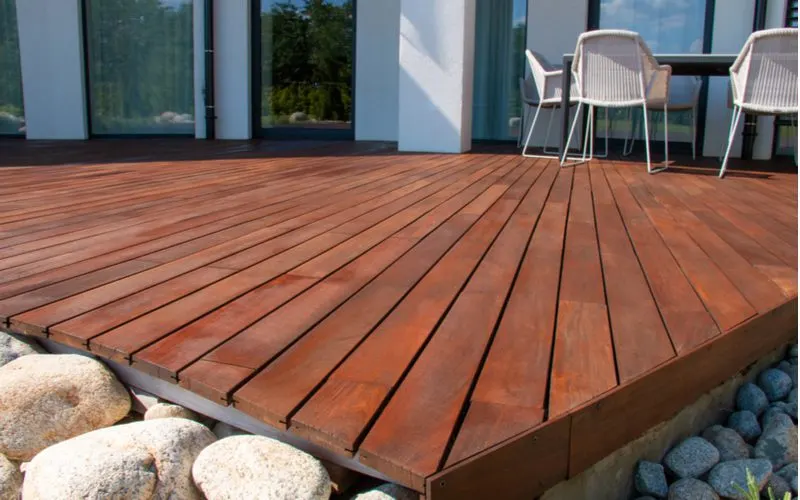
Radoslav Cajkovic/Shutterstock
The final alternative that adds a striking amount of refinement to any house is stone. Brink and stone deck skirts are an often overlooked alternative to deck lattices. By using stone to frame the deck, you can change the tone of the whole house.
Using a matching brick can help the deck look more like a part of the house. This is especially good if it was added later as an addition and never really fit in.
Alternatively, using a different brick from the house can make the deck feel larger and draw the eye.
If you want to show off the deck without using different materials that look out of place, then the mismatched brick is a good option. Stone, on the other hand, has so many variations that you can do almost anything with it.
Large, monochrome stone can make a house feel like a castle, while small, multicolored flat stone makes the house look chic and modern. Round river rocks can add some beautiful detailing to decks near pools.
They make your yard feel like an oasis in otherwise depressing suburbia. Mixing rocks and stones of different sizes, shapes, and colors can result in unexpected and intriguing patterns.
While brick and stone deck skirts are rarely seen compared to wood, they can be the perfect choice if you’re looking for something unique.
Things to Consider
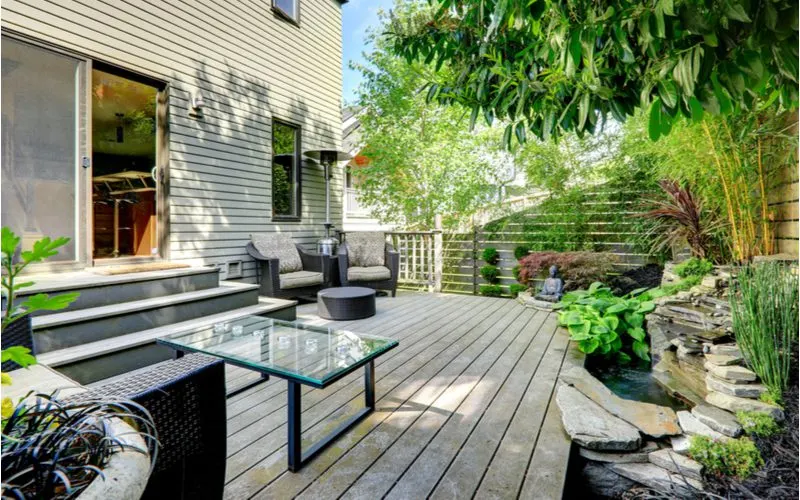
Artazum/Shutterstock
Before picking an alternative design for your deck skirt, it is always good to consider all options and how they will affect the finished product.
- How high is your deck?
- What does the rest of your house look like?
- Is the deck in the backyard or front?
- Do you want a solid or slat design?
- Is it high enough to use for storage?
- How much are you willing to spend?
- What color would you paint it?
- What do you hate most about lattice?
Frequently Asked Questions
What is the purpose of a porch skirt?
Deck skirts serve many functions. While the main purpose is to keep animals out and solidify the look of the house, they can also act as storage areas and decorative elements.
Do I need a deck skirt or lattice?
Deck skirts are not strictly necessary. Many raised decks are open so that the yard space underneath can be accessed; however, deck skirts do a terrific job of keeping out unwanted critters, yard debris, and weeds. They also negate the need to clean under your deck and look nice and tie the house together.
Which Deck Lattic Alternative Will You Choose?
So there you have it—our favorite deck lattice alternatives. Deck skirts are a fabulous way to hide what’s under the deck and add a little personality to your house at the same time.
Understandably, lattice skirting isn’t for everyone, so try stone, brick, solid wood, slat plants, or something Victorian-esque to mix it up. And remember, paint is your friend.

